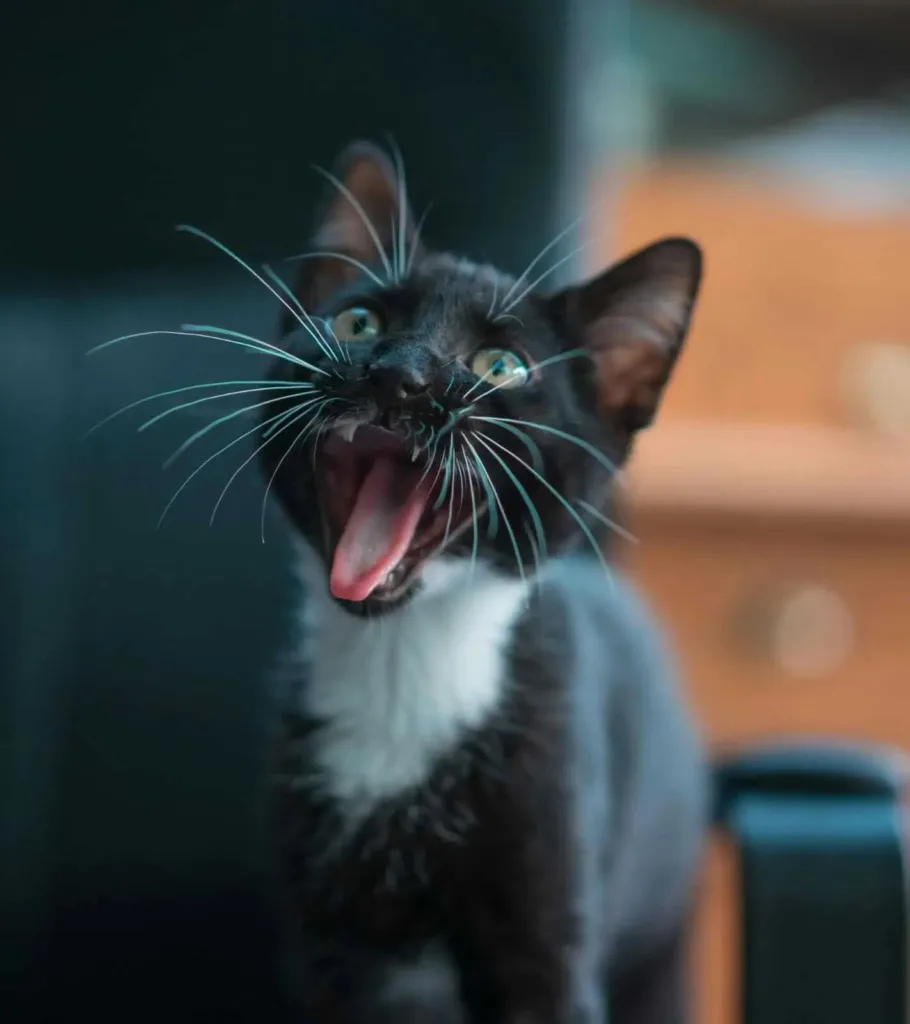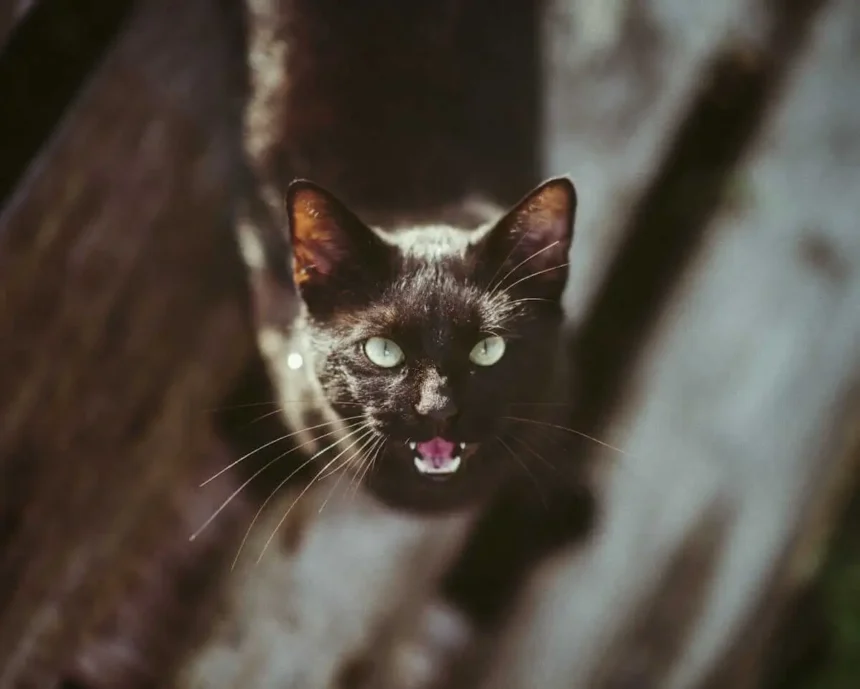Sudden aggression in cats can be alarming for pet owners, leaving you wondering what triggered this change in your feline companion’s behavior. Cat aggression, whether it’s biting, scratching, hissing, or swatting, often stems from underlying causes like pain, stress, or environmental changes. Understanding why your cat is suddenly aggressive is crucial for addressing the issue safely and effectively. In this comprehensive guide, we’ll explore the signs, causes, types, and solutions for aggressive cat behavior, helping you restore harmony in your home. If you’re dealing with a suddenly aggressive cat, know that you’re not alone—many cat owners face this challenge, and with the right approach, it can often be managed or resolved.
Introduction
Cats are typically independent and affectionate animals, but when they exhibit sudden aggression, it can disrupt the bond between you and your pet. Sudden cat aggression refers to unexpected hostile behaviors that weren’t present before, such as attacking without warning or showing defensiveness. This shift might be due to medical issues, fear, or territorial disputes. Recognizing the root cause is essential, as ignoring it could lead to injuries or further stress for both you and your cat. According to veterinary experts, pain is one of the most common triggers for sudden aggression in older or previously calm cats.066f3f By identifying early signs and seeking professional help, you can prevent escalation and improve your cat’s quality of life.
What Does Aggression in Cats Look Like?

Aggression in cats manifests in various ways, from subtle body language to overt actions. It might appear as hissing, growling, swatting with paws, biting, scratching, or even full-on attacks. Cats often display piloerection (raised fur), arched backs, or rapid tail movements before escalating. These behaviors are a cat’s way of communicating discomfort or threat. Unlike dogs, cats’ aggression can be more unpredictable, making it important to observe context—such as during play, petting, or interactions with other pets.
Identifying Sudden Aggression in Cats
Sudden aggression in cats is characterized by a noticeable change in behavior, where a once-friendly feline starts showing hostility without apparent reason. To identify it, look for patterns: Does it happen after a specific event, like a vet visit or seeing another animal? Track incidents by noting time, location, and triggers. Common indicators include dilated pupils, flattened ears, and tense posture. If your cat’s aggression appears out of the blue, rule out medical causes first, as conditions like arthritis or dental disease can cause pain-induced outbursts.
Common Causes for Sudden Cat Aggression
Sudden aggression in cats can be distressing, but understanding its root causes is the first step toward addressing it effectively. Cats are sensitive creatures, and abrupt changes in their behavior often signal underlying issues, whether medical, environmental, or psychological. Below, we explore the primary reasons why your cat may suddenly become aggressive, helping you pinpoint the trigger and take appropriate action.
Medical Issues and Pain
Pain is one of the most frequent causes of sudden aggression in cats, particularly in older felines or those with undiagnosed health conditions. Cats instinctively hide discomfort, so aggression may be their only way to express it. Common medical issues include:
Dental Problems: Tooth abscesses or gingivitis can make eating or grooming painful, leading to irritability.
Arthritis: Joint pain, especially in senior cats, can cause aggression when touched or moved.
Injuries or Infections: Hidden wounds, urinary tract infections, or skin conditions can trigger defensive behavior.
Neurological Conditions: Disorders like hyperthyroidism, epilepsy, or toxoplasmosis may alter behavior, causing sudden hostility. A veterinary exam is crucial to rule out these conditions, as treating the underlying issue often resolves the aggression.
Environmental Stressors
Changes in a cat’s environment can disrupt their sense of security, leading to stress-induced aggression. Cats thrive on routine, and disruptions can make them feel threatened. Common stressors include:
Moving to a New Home: Unfamiliar surroundings can cause anxiety, prompting defensive or territorial aggression.
New Pets or People: Introducing a new pet, baby, or housemate can spark competition or fear.
Loud Noises or Construction: Sudden noises, like fireworks or renovations, can trigger fear-based aggression.
Changes in Routine: Altered feeding times or owner absence can unsettle cats, leading to irritability. Providing a safe space with familiar items like their bed or toys can help reduce stress-related aggression.
Redirected Frustration
Redirected aggression occurs when a cat is aroused by an inaccessible stimulus and lashes out at a nearby target, such as a person or another pet. For example:
Outdoor Animals: Seeing a stray cat or bird through a window can frustrate a cat, leading to an attack on a nearby human or pet.
Unreachable Threats: Loud noises or smells (e.g., another animal’s scent) can cause pent-up frustration. This type of aggression is often sudden and intense, requiring owners to identify and block the stimulus, such as closing blinds or using white noise machines.
Overstimulation
Petting-induced aggression is a common form of overstimulation, where a cat enjoys petting but suddenly becomes overwhelmed. This is often seen in cats with low tolerance for prolonged touch. Triggers include:
Repetitive Stroking: Over-petting sensitive areas like the back or belly can lead to biting or swatting.
Sensory Overload: Loud environments or excessive handling can push a cat past their comfort zone. Learning to read your cat’s body language, like tail flicking or ear twitching, can help you stop petting before aggression occurs.
Lack of Socialization
Cats that weren’t properly socialized as kittens may struggle with handling stress or unfamiliar situations, leading to sudden aggression. This is common in:
Rescue Cats: Those with traumatic pasts may react aggressively to perceived threats.
Under-Socialized Kittens: Limited exposure to people or other animals can result in fear-based aggression. Gradual exposure to new stimuli, paired with positive reinforcement, can help these cats become more comfortable over time.
Hormonal or Territorial Triggers
Unspayed or unneutered cats are more prone to aggression due to hormonal influences. Territorial disputes, especially in multi-cat households, can also spark sudden hostility. Examples include:
Mating Instincts: Intact males may become aggressive during mating season, while females may show maternal aggression to protect kittens.
Resource Competition: Cats may fight over food, litter boxes, or favorite spots, leading to territorial aggression. Spaying/neutering and ensuring ample resources (e.g., multiple litter boxes) can mitigate these issues.
Psychological or Idiopathic Causes
In rare cases, aggression may be idiopathic, meaning no clear cause is identified. This could stem from complex psychological factors or undiagnosed neurological issues. Cats with idiopathic aggression may require a feline behaviorist to develop a tailored management plan.
What Are the Signs of Aggression in Cats?

Recognizing the signs of aggression in cats is critical for early intervention and preventing escalation. Cats communicate through body language, vocalizations, and behaviors, and aggressive signals can range from subtle to overt. By understanding these cues, you can identify when your cat is feeling threatened or ready to act out, allowing you to respond appropriately. Below are the key signs of aggression in cats, categorized for clarity.
Physical Body Language
Cats use their bodies to signal discomfort or aggression, often before attacking. Watch for:
Flattened Ears: Ears pressed back or sideways indicate fear or readiness to defend.
Dilated Pupils: Wide pupils suggest arousal, fear, or agitation.
Raised Hackles (Piloerection): Fur standing up along the spine signals a defensive or threatened state.
Arched Back or Crouching: An arched back shows defensiveness, while crouching may precede a pounce.
Tail Movements: A rapidly flicking or thrashing tail often indicates irritation or impending aggression, while a tucked tail suggests fear. These signs are early warnings, so observing them can help you de-escalate before an attack.
Vocal Cues
Cats vocalize to express discomfort or warn others. Common aggressive vocalizations include:
Hissing: A clear warning to back off, often paired with bared teeth.
Growling: A low, guttural sound indicating anger or fear.
Yowling or Screaming: Loud, intense vocalizations during confrontations, especially in inter-cat aggression.
Spitting: A sharp, explosive sound signaling immediate defensiveness. Pay attention to the context, as vocalizations paired with specific body language (e.g., hissing with flattened ears) are stronger indicators of aggression.
Behavioral Indicators
Aggressive behaviors are the most obvious signs and can result in harm if not addressed. These include:
Biting: Ranging from light nips (often in play aggression) to hard, intentional bites.
Scratching or Swatting: Cats may use their claws to strike, especially when cornered or overstimulated.
Pouncing or Stalking: Common in play or predatory aggression, where the cat targets feet, hands, or other pets.
Blocking or Charging: Seen in territorial or status-induced aggression, where a cat prevents access to areas or charges at perceived threats. Tracking when and where these behaviors occur can help identify triggers, such as specific times of day or interactions.
Subtle Warning Signs
Cats often give subtle cues before escalating to overt aggression, which can be missed if you’re not attentive. These include:
Stiff Posture: A tense body with a fixed stare indicates readiness to act.
Lip Licking or Yawning: These can signal discomfort or stress in certain contexts.
Sudden Grooming Pause: Stopping mid-groom to stare or shift posture may precede aggression.
Avoidance Behaviors: Hiding or retreating can escalate to defensive aggression if the cat feels cornered. Learning to recognize these early signs allows you to intervene, such as by giving your cat space or redirecting their focus with a toy.
Contextual Variations
The signs of aggression vary depending on the type (e.g., defensive vs. offensive). For example:
Defensive Aggression: Characterized by crouching, tucked tail, and sideways posture to appear smaller and avoid conflict.
Offensive Aggression: Involves upright ears, a direct stare, and a forward-leaning posture to intimidate. Understanding these differences helps determine whether your cat is acting out of fear or asserting dominance, guiding your response strategy.
Signs of Defensive vs. Offensive Aggression in Cats
Defensive aggression occurs when a cat feels threatened and can’t escape, showing signs like crouching, flattened ears sideways, dilated pupils, hissing, and quick strikes to create distance. The cat appears fearful, with a tucked tail and turned-away body. Offensive aggression, on the other hand, involves the cat advancing confidently: stiffened legs, upright ears, direct stare, growling, and a straight tail. This is often seen in territorial or status-related disputes, where the cat aims to intimidate or dominate.
Types of Cat Aggression
Cat aggression can be classified into several types, each with distinct triggers and behaviors. Understanding these helps in tailoring solutions.
Play Aggression
Play aggression is common in young cats or kittens lacking proper socialization. It involves stalking, pouncing, biting ankles, or ambushing, mimicking hunting behavior. While playful, it can cause injury if not redirected with toys.
Fear Aggression
Fear aggression arises from perceived threats, like unfamiliar people or noises. Cats show flattened ears, hissing, and may strike if cornered. Past trauma or poor socialization exacerbates this.
Petting-Induced Aggression
This happens when a cat enjoys petting but suddenly becomes overstimulated, leading to biting or swatting. Signs include tail lashing and dilated pupils. It’s more common in some cats due to sensitivity to repetitive touch.
Redirected Aggression
Redirected aggression occurs when a cat, aroused by an external stimulus (e.g., another animal outside), attacks a nearby person or pet instead. It’s unpredictable and can linger, making it one of the most dangerous types.
Inter-Cat Aggression
Inter-cat aggression involves conflicts between household cats, often due to hormonal changes, resource competition, or personality clashes. It includes chasing, fighting, or blocking access to areas.
Pain-Induced Aggression
Pain-induced aggression stems from discomfort, such as from dental issues, arthritis, or injuries. Cats may lash out when touched in sensitive areas, especially if the pain is chronic.
Status-Induced Aggression
Status-induced aggression is when a cat asserts dominance, like growling when displaced from a spot or blocking doorways. It’s rare but seen in confident cats challenging household hierarchy.
Maternal Aggression
Maternal aggression protects kittens, with queens hissing or attacking approaching people or animals. It typically subsides as kittens grow but is intense in the early weeks.
Territorial Aggression
Territorial aggression defends space against intruders, like new pets or stray cats visible outside. Cats may urine mark, patrol, or attack to maintain boundaries.
Are Certain Cat Breeds More Aggressive?
While no cat breed is inherently aggressive, some may show predispositions due to genetics or traits. Siamese and Abyssinian cats are sometimes noted for higher energy and vocalness, which can manifest as aggression if not stimulated properly. Turkish Van and Angora breeds have been reported as more aggressive toward people and other cats in studies. However, aggression is more influenced by individual personality, socialization, and environment than breed. Breeds like Ragdoll, Sphynx, Burmese, and Maine Coon are generally calmer. Always consider early training and vet checks for any breed.
What Causes Sudden Aggression in Felines?
Sudden aggression in felines often results from medical problems (e.g., toxoplasmosis, hyperthyroidism), stress from environmental changes, or frustration. Other causes include lack of socialization, overstimulation, or unresolved pain. In some cases, it’s idiopathic, with no clear trigger, requiring professional evaluation.
Why Is My Cat Aggressive at Night?
Your cat may become aggressive at night due to their natural crepuscular (dawn/dusk active) instincts, leading to bursts of energy or hunting behavior. Nocturnal aggression could stem from play-seeking, where they pounce on moving feet under blankets, or redirected frustration from outdoor animals visible in the dark. Stress, boredom, or medical issues like pain that worsens at rest can also contribute. Providing evening play sessions and a quiet sleeping area can help mitigate this.
What Should I Do If My Cat Experiences Sudden Aggression?
If your cat shows sudden aggression, first ensure safety by giving them space and avoiding confrontation. Schedule a veterinary exam to rule out medical causes like pain or illness. If cleared, consult a certified animal behaviorist for a tailored plan. Track triggers in a journal, and consider environmental enrichments like pheromone diffusers or separate resources in multi-pet homes.
How to Calm Aggressive Cats
To calm aggressive cats, create a stress-free environment with hiding spots, vertical spaces, and interactive toys. Use positive reinforcement: reward calm behavior with treats. For fear-based issues, gradual desensitization with treats can help. Pheromone collars or diffusers mimic calming scents. In severe cases, vets may prescribe anti-anxiety medication alongside behavior modification. Always approach slowly and read body language to avoid escalation.
What Not to Do With Aggressive Cats
Avoid punishing aggressive cats physically or verbally, as it can worsen fear and aggression. Don’t console them during episodes, as it may reinforce the behavior. Forcing interactions, like picking up a defensive cat, can lead to bites. Ignore attempts at dominance rather than challenging them. Never use hands or feet as toys, and avoid startling them with loud noises or sudden movements.
FAQ
Final Takeaways
Sudden cat aggression often has treatable causes like pain or stress—always start with a vet visit.
Recognize signs early: flattened ears, hissing, and dilated pupils to prevent escalation.
Types like redirected or pain-induced require specific management, such as giving space or medical treatment.
Avoid punishment; focus on positive reinforcement and environmental changes for calmer behavior.
With patience and professional help, most aggressive cats can improve, strengthening your bond. If issues persist, prioritize safety and seek expert advice promptly.

